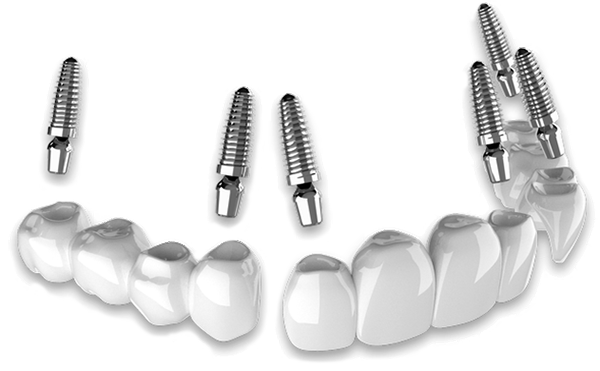All-on-4 or All-on-6
The choice between all-on-4 and all-on-6 implants depends on several factors, including the patient’s individual needs, bone quality, and the recommendations of the dental professional. Both options are popular and effective solutions for full-arch dental restorations. Here’s a comparison of the two:
It is a long established fact that a reader will be distracted by the readable content of a page when looking at its layout. The point of using Lorem Ipsum is that it has a more-or-less normal distribution of letters, as opposed to using ‘Content here
